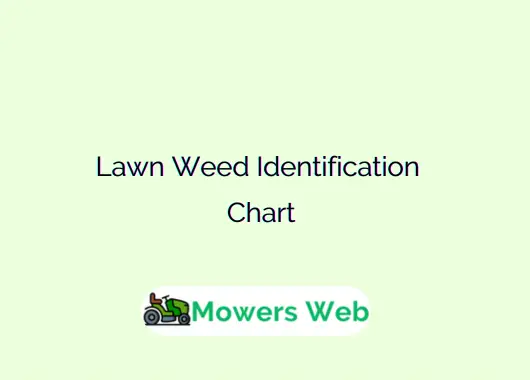A healthy, green lawn is a homeowner’s pride, but sometimes brown patches, yellow rings, or thinning grass can indicate something deeper, a lawn disease. Identifying lawn diseases early can save you time, money, and frustration.
This comprehensive Lawn Disease Identification Chart below outlines the most common grass diseases, their symptoms, causes, and control methods.
Lawn Disease Identification Chart
| Disease Name | Appearance / Symptoms | Causes | Common Grass Types Affected | Control / Treatment |
|---|---|---|---|---|
| Take-All Patch | Circular yellow to brown patches; roots turn black and rot | Poor drainage, high soil pH, warm humid weather | Bentgrass, Bermuda, St. Augustinegrass | Apply manganese sulfate, improve drainage, use azoxystrobin fungicide |
| Brown Ring Patch (Waitea Patch) | Rings of yellow to brown turf, often confused with necrotic ring spot | Thatch buildup, excessive nitrogen, warm weather | Poa annua, bentgrass | Reduce nitrogen, dethatch lawn, apply flutolanil fungicide |
| Yellow Patch (Cool-Season Brown Patch) | Irregular yellow spots during cool, wet weather | Prolonged moisture, poor drainage | Bluegrass, fescue | Improve air circulation, avoid overwatering, apply iprodione fungicide |
| Curvularia Blight | Irregular tan or brown patches, often following drought stress | Drought followed by moisture, compacted soil | Bermuda, zoysia | Relieve compaction, maintain consistent watering, apply propiconazole |
| Leaf Blight (Drechslera spp.) | Leaf tips brown, progressing downward, turf thins quickly | Warm, wet weather, low mowing | Ryegrass, bluegrass | Raise mowing height, avoid night watering, use chlorothalonil fungicide |
| Yellow Tuft (Downy Mildew) | Bright yellow tufts of grass; stunted and distorted growth | Excess moisture, poor drainage | Bluegrass, fescue | Improve drainage, reduce irrigation, apply metalaxyl fungicide |
| Zoysia Patch (Large Patch) | Circular brown patches with orange borders; active in spring/fall | Rhizoctonia fungus, high humidity | Zoysiagrass | Reduce nitrogen in fall, apply azoxystrobin or flutolanil |
| Bermudagrass Decline (Spring Dead Spot) | Circular dead patches after winter dormancy | Cold stress, low potassium, compaction | Bermudagrass | Apply potassium fertilizer, aerate soil, apply propiconazole |
| Rhizoctonia Large Patch | Large circular areas turning orange or brown | High humidity, excessive thatch | Zoysia, centipedegrass | Remove thatch, reduce nitrogen, apply fungicide in fall |
| Smut (Ustilago spp.) | Black, dusty spores inside leaf tissues, causing thinning | Cool, moist conditions | Bluegrass, ryegrass | Overseed with resistant varieties, remove infected grass |
| Bacterial Wilt | Wilting, yellowing patches, sticky sap exudes when cut | Hot, wet weather, bacterial infection | Bentgrass, ryegrass | Avoid wounding grass, improve drainage, no chemical control |
| Copper Spot | Small copper-colored patches (1–3 inches) | Warm, wet conditions, low nitrogen | Bentgrass, fescue | Maintain balanced fertility, improve air circulation, apply fungicide |
| Yellow Patch (Rhizoctonia cerealis) | Yellow rings or spots in cool, wet conditions | Poor drainage, prolonged moisture | Bluegrass, fescue | Reduce watering, aerate soil, apply iprodione |
| Poa Annua Decline | Poa annua turns brown or dies off during summer | Heat and drought stress | Annual bluegrass | Replace with heat-tolerant grasses, improve irrigation schedule |
| Brown Blight (Helminthosporium turcicum) | Brown streaks on blades merging into dead patches | High humidity, poor mowing | Ryegrass, Bermuda | Maintain mowing height, avoid stress, apply propiconazole |
| Algal Scum | Slippery green or blue-green coating on soil surface | Poor drainage, shade, compacted soil | All lawn types | Aerate, increase sunlight, use iron sulfate solution |
| Mini-Ring (Bipolaris spp.) | Small rings or arcs of brown turf | Thatch accumulation, drought | Bermuda, zoysia | Dethatch, deep water infrequently, use systemic fungicide |
| Rusty Patch (Uromyces spp.) | Patches of grass with orange or brown dust spores | Dry days and humid nights | Bluegrass, fescue | Fertilize properly, mow regularly, use myclobutanil |
| Wilt Disease (Fusarium oxysporum) | Grass wilts suddenly, roots discolored | Soilborne fungi, heat stress | Bermuda, ryegrass | Avoid overwatering, improve drainage, apply fungicide drench |
| Root Rot (Gaeumannomyces spp.) | Roots become dark, weak, turf pulls easily | Waterlogging, poor aeration | All grass types | Aerate soil, reduce watering, apply thiophanate-methyl fungicide |
Related Lawn Weed Identification Chart(For All Weed Types)
Key Tips for Lawn Disease Management
- Water Wisely – Water deeply but infrequently, preferably in the early morning to reduce humidity.
- Mow Correctly – Avoid cutting more than one-third of the grass blade at once. Keep mower blades sharp to prevent stress.
- Fertilize Appropriately – Too much or too little nitrogen can promote disease. Conduct soil testing for balanced nutrition.
- Improve Air Circulation – Trim trees and shrubs around the lawn to reduce shade and increase airflow.
- Reduce Thatch Build-up – Thatch thicker than ½ inch holds moisture and harbors fungal pathogens. Aerate and dethatch as needed.
- Choose Resistant Grass Varieties – When seeding or overseeding, select cultivars bred for disease resistance.
- Monitor Regularly – Early detection is key. Walk your lawn weekly to check for unusual color, texture, or growth changes.
Related Lawn Mowing Lawn Care Pricing Chart(Updated 2025)
Final words
Recognizing lawn diseases early can make a world of difference in maintaining a lush and healthy yard. With this Lawn Disease Identification Chart, you can quickly pinpoint what’s affecting your grass and take the right corrective measures.
Remember, prevention, through good cultural practices like aeration, balanced fertilization, and proper watering, is always better than cure.




